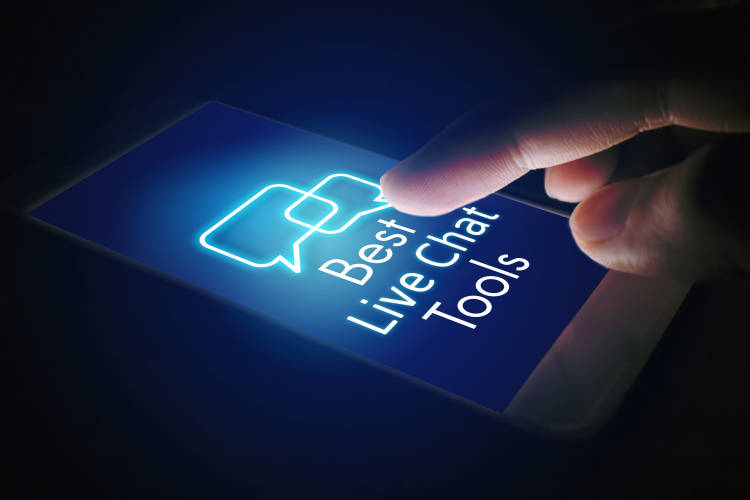- What is a predictive dialer?
- Evolution of predictive dialers
- Predictive dialers vs Power dialers vs Auto dialers
- Top benefits of using a predictive dialing system in customer service
- How does predictive outbound dialer work
- 3 steps to deploy predictive dialers in your business
- Resolve challenges with predictive dialers
What is a predictive dialer?
A predictive dialer is an automated telephone dialing system that uses algorithms to call multiple phone numbers simultaneously, connecting answered calls to available agents.
Predictive dialers are designed to time calls so that they’re ready as soon as an agent wraps up the previous one, skipping over unanswered calls to reduce downtime. This setup allows call centers to handle high volumes more efficiently, letting agents focus more on engaging with customers and less on waiting for connections.
Evolution of predictive dialers
Back in the late 1980s, Douglas A. Samuelson took a hard look at how call centers and auto dialers functioned and deliberated that there had to be a better way. He introduced the first predictive dialer, a system designed to call numbers intelligently. Samuelson's design, which earned him US Patent 4,858,120 was built on mathematical calculations. These calculations optimized call timing by predicting the likelihood of someone answering and also when an agent would be available to take the call.
As the years have passed, the technology behind predictive dialers has grown leaps and bounds. Now infused with AI, these systems are more adept than ever. Far beyond static rules, AI continuously learns from data, recognizing patterns in customer behavior and agent activity. This means that modern predictive dialers can course-correct in real-time, adjusting based on current call outcomes and even anticipating future trends. It’s a far cry from the early days, offering contact centers a smarter, more responsive way to manage communication.
Predictive dialers vs Power dialers vs Auto dialers
Feature | Predictive Dialer | Power Dialer | Auto Dialer |
Dialing Method | Dials multiple numbers based on algorithmic predictions of agent availability and answer probability | Dials one number at a time, automatically moving to the next after a call is finished | Automatically dials numbers from a list without intelligent call predictions |
Connects answered calls to available agents automatically | Directly connects the next call to the agent after finishing the previous one | Connects calls to agents as they become available; may result in wait times | |
Ideal Use Case | Large call centers with a need for high efficiency in customer interactions | Sales teams that require continuous calling without pauses | General telemarketing where detailed tracking or prediction isn’t critical |
Call Volume Handling | Optimizes constant call flow | Consistent but limited to available agents | Can handle large volumes but may include inefficiencies |
Efficiency Optimization | High; uses historical data and real-time analytics to improve call timing | Moderate; focuses on reducing idle time but does not predict call outcomes | Low; primarily automates the dialing process with minimal strategy |
Real-Time Adjustments | Yes; adjusts the dialing rate based on real-time operations and outcomes | Limited; primarily based on the sequential call strategy | No; operates on a set list and sequence without adaptive capabilities |
Top benefits of using a predictive dialing system in customer service
It’s not surprising how rapidly businesses today are adopting predictive dialers. In fact, the technology market is set to record a CAGR of over 37% until 2028. Here’s a rundown of the top benefits of predictive dialers that seem to justify its phenomenal growth.
🛠️ Productivity gains
Predictive dialers keep agents on the phone with customers, reducing time spent on manual tasks like dialing. This shift means agents can handle more conversations each hour, increasing the chances of closing deals.
💰 Cost efficiency
A predictive dialer reduces costs by automating dialing and filtering out unproductive calls, allowing agents to focus on live interactions. This efficiency lowers labor costs by requiring fewer agents. Moreover, when your contact center is cloud-based, predictive dialing helps align call volume with demand, preventing unnecessary expenses during low-demand periods.
📞 Strategic call management
Effective dialer systems manage call pacing to ensure that your outreach is both strategic and non-intrusive for customers. For example, if a customer is part of multiple campaigns, the system can space out the calls, so the customer isn’t contacted too often.
🌟 Versatility in application
While predictive dialing often finds its utility in outbound call centers, it’s also an asset in customer service. It can be used for campaigns like service upgrade notifications and follow-ups on inbound calls or customer tickets, expanding its utility beyond just sales.
How does predictive outbound dialer work
Predictive dialers operate on the backbone of adaptive algorithms that meticulously manage the flow of outbound calls. The system begins by analyzing key metrics such as average handle time (AHT), call connection rates and agent availability. To understand the optimal timing and frequency of calls, consider the following factors:
Dynamic call pacing: At the heart of a predictive dialer is the pacing algorithm. This algorithm constantly evaluates the number of active and idle agents and adjusts the call rate accordingly. If more agents are available, the algorithm ramps up the dialing pace, placing multiple calls simultaneously. Conversely, if fewer agents are available, the system slows down the dialing rate to prevent overwhelming the agents. This adaptive mechanism ensures a balance between maximizing agent talk time and minimizing idle time, while also avoiding the pitfalls of overwhelming agents with too many calls at once.
Call abandonment rate: The dialer’s logic is designed to carefully time each call so that when an agent becomes available, there’s already a connected customer waiting. The system works to minimize the chances of abandoned calls — where a customer hangs up due to delays in connecting with an agent. This is critical because a high call abandonment rate can lead to lost opportunities and customer frustration. The dialer carefully times the placement of each call, ensuring that an agent is ready to engage as soon as the call is answered.
Did you know?
The predictive dialer in an advanced outbound voice solution can not only anticipate the call volume, but also the predicted CSAT score of your customer before they are wired in through to your team, so that the agent in charge knows the severity of the case and just the right demeanor to assume before facing the customer.
Real-time data utilization: The strength of a predictive dialer lies in its ability to constantly gather and analyze call data. Metrics such as how long it takes for calls to be answered, how many calls connect successfully, and the duration of each interaction are continuously fed into the system. This data-driven approach allows the dialer to improve its strategies in real-time, filtering out non-productive calls and adjusting the dialing pace to align with the actual flow of agent activity.
Optimizing call flow: Predictive dialers refine the entire process of managing calls. Before an agent finishes one interaction, the system is already preparing the next connection, so the downtime stays low. The dialer also filters out calls that won’t lead to a conversation, such as those that hit busy signals or go straight to voicemail, ensuring that agents only deal with live customers.
3 steps to deploy predictive dialers in your business
To deploy a predictive dialer in your contact center, consider following these three steps.
1. Choosing your solution
When deploying a predictive dialer, the first step is selecting the right type of solution — either on-premise software, a cloud-based service or an add-on from an existing CCaaS provider.
On-premise installation
Installing a predictive dialer on-premise offers full control and customization. It requires substantial IT resources for setup, including server configuration, dialing rules, data storage management and network optimization. This option is ideal for contact centers with specific integration needs and the capability to manage ongoing maintenance.Cloud-based service
A cloud-based predictive dialer offers quick deployment and scalability. It’s hosted by the provider, reducing hardware costs and IT overhead. Setting it up often involves configuring user accounts, importing contact lists and setting dialing parameters. The provider handles maintenance, security and updates, allowing easy integration with other cloud tools.
Know More: On-premise vs. Cloud Contact Center: Which One is Better?CCaaS integration
Integrating a predictive dialer into a CCaaS platform streamlines the management of both inbound and outbound calls. The integration involves mapping the dialer’s functions to contact center workflows, which may include syncing up customer interaction histories, setting up automated call distribution and ensuring compatibility with the current tech stack. It ensures a unified experience across the contact center, making it easier to manage and train agents on the system.
2. Configuration and optimization
Post-deployment, configure the dialer to match your operational goals by setting dialing rules, call lists and pacing ratios. Fine-tune algorithms based on campaign specifics, such as call volume and duration. This ensures the dialer aligns with your contact center’s needs.
3. Ongoing management
Once deployed, the predictive dialer needs continuous monitoring and adjustment. IT teams or the service provider will need to regularly update the system to weave in new data, optimize dialing strategies and ensure contact center compliance with regulations such as the Telephone Consumer Protection Act (TCPA).
Resolve challenges with predictive dialers
Let’s take an example in financial services.
A bank can use a predictive dialer to focus on clients who are most likely to be interested in loan products or refinancing, such as those with improving credit scores or loans nearing their maturity. Using the right APIs, the dialer can be integrated with the bank’s credit analysis or risk evaluation systems, which helps schedule calls when these clients have historically been most receptive.
This way every call placed is more likely to result in a productive conversation. The system could also track how different client segments respond to various loan offers --- helping outbound agents refine their pitches to be more customer-centric.
On the other hand, in telecom, it’s a different ballgame.
In telecom, predictive dialers could focus on high-data users approaching their plan limits, proactively offering upgrades or additional packages to prevent overages. By linking the dialer with usage tracking systems, they can anticipate when a customer might need a top-up and get in touch right before they hit data caps.
The system keeps tabs on which approaches work best, adjusting offers and call times on the fly to ensure that each call is as productive as possible. This strategy lowers customer churn rate and makes sure that agents are making the most out of their call lists.
Boost your predictive dialing with Sprinklr’s contact center software
Contact centers often struggle to automate their outbound voice processes, resulting in poor agent productivity and overall efficiency. With Sprinklr Service’s predictive dialing capabilities, built on the world’s first Unified Customer Experience Management (Unified-CXM) platform, your business can make sure your contact center agents are equipped with the best smart dialing capabilities to help maximize their productivity.
Integrated voice capabilities with your contact center solution to provide a unified customer support experience
Smart outbound dialers powered by continuously learning and improving AI models
360° view agent desktop to understand previous customer interactions and provide relevant information upfront
In-depth campaign reporting and integration capabilities with contact center CRM
Frequently Asked Questions
related products
Thank you for contacting us.
A Sprinklr representative will be in touch with you shortly.
Contact us today, and we'll create a customized proposal that addresses your unique business needs.
Request a Demo
Welcome Back,
No need to fill out any forms — you're all set.


